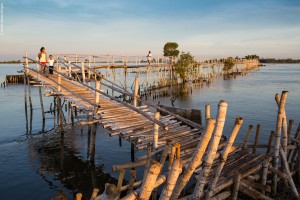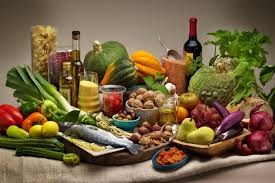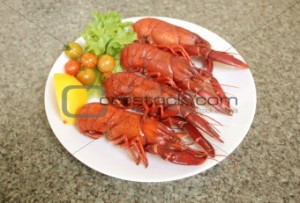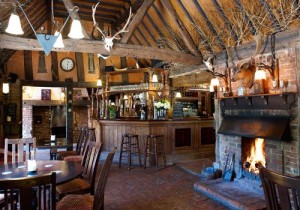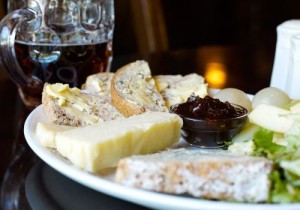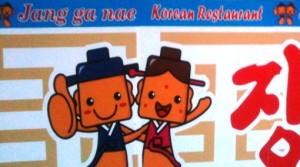“Life is a game… play it with a light heart.”
 I often think that perfect holidays are perfectly awful to write about. When everything goes smoothly, there is no drama, no humour, no adventure to give the tale an edge. Yet, our recent trip to SW Luzon came close to perfection, and despite the lack of calamity, muddle or misfortune to make us giggle after the event, it seems I must share it anyway.
I often think that perfect holidays are perfectly awful to write about. When everything goes smoothly, there is no drama, no humour, no adventure to give the tale an edge. Yet, our recent trip to SW Luzon came close to perfection, and despite the lack of calamity, muddle or misfortune to make us giggle after the event, it seems I must share it anyway.
Our daughter turned twenty one this month, and after much debate about possible destinations, she opted to return to Stilts to celebrate. Never keen to take centre stage, our girl was perfectly happy with a family gathering. This included her grandparents who flew into Cork, Ireland twenty one years ago for her birth, and now cheerfully made the shorter trip to the Philippines armed with swimmers and sun hats instead of coats and gloves.
The design for this dreamy resort was inspired by the pre-colonial era when the Filipinos would build their houses on stilts over the water of Balayan Bay. I had booked the largest cabin at Stilts, which sleeps eight, and lay at the end of a long wooden bridge, way out over the water. We packed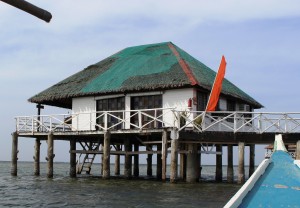 the car with balloons, birthday cake and bubbles and headed south. Pausing for a luxurious lunch at Antonio’s in Tagaytay, we finally reached Calatagan around five, and set ourselves up in the last hour of daylight.
the car with balloons, birthday cake and bubbles and headed south. Pausing for a luxurious lunch at Antonio’s in Tagaytay, we finally reached Calatagan around five, and set ourselves up in the last hour of daylight.
All was as she remembered it, and all was good. Her grandparents were delighted with the serene simplicity of the place, and, despite a stiff breeze rattling the thatch – virtually a hurricane, we thought – we were soon relaxing on the balcony with a cup of tea and some left over Christmas cake, gloating over our view across the South China Sea. The steep drop in temperature and the fresh air was blissful, and everyone was in a good place. The boys, arriving later from Manila, met us on the beach with a bucket of beers, as the sun settled unobtrusively into the sea.
The weekend was a perfect mix (aaaghhh! there’s that word again) of relaxation, activity and family time. We took a banca ride out beyond the reef on Saturday morning to try some snorkeling in rather choppy waters, but once beneath the waves, there was plenty to see. Although why I always get the mask that leaks or steams up, and has me struggling inelegantly to readjust everything, while being slapped in the face by obstreperous waves, is beyond my understanding. Still, we had an energetic morning and returned to the banca with buried treasure, as the kids located a large, full bottle of rum that they found balanced precariously on the back of a starfish. I won’t dwell on the sight of us all scrambling frantically back into the boat as the waves attempted to knock us off the ladder, but needless to say, poise was decidedly lacking.
We picnicked on a deserted beach, sadly strewn with rubbish, and this was followed by a restful afternoon of napping and massages, and a little juggling to ensure the birthday cake and decorations were delivered surreptitiously to the staff, so they could set up a surprise birthday dinner on the beach. Our girl had sussed that something was up and followed me nervously to dinner, much relieved as we dodged the restaurant and headed down to the empty beach…
 …to find a stage set with lanterns and fairy lights and birthday banners and paper bags filled with flickering tea lights , around a table set with party masks, Disney Princess napkins and flowers and laden with food. Our waiter kept us irrigated with regular supplies of beer and gin, and when the time came, he expended enormous energy on lighting a plethora of birthday candles that struggled to survive in the stiff breeze. Eventually we gave up and sang loudly at a somewhat lackluster cheesecake, bedecked in sprightly glacé cherries and mango. And anyway, the sky was awash with stars, so who needs sulky candles? The boys had brought their guitars and serenaded their sister with ballads, while their grandmother (yes, and me, I admit it) got a little leaky over such memories in the making.
…to find a stage set with lanterns and fairy lights and birthday banners and paper bags filled with flickering tea lights , around a table set with party masks, Disney Princess napkins and flowers and laden with food. Our waiter kept us irrigated with regular supplies of beer and gin, and when the time came, he expended enormous energy on lighting a plethora of birthday candles that struggled to survive in the stiff breeze. Eventually we gave up and sang loudly at a somewhat lackluster cheesecake, bedecked in sprightly glacé cherries and mango. And anyway, the sky was awash with stars, so who needs sulky candles? The boys had brought their guitars and serenaded their sister with ballads, while their grandmother (yes, and me, I admit it) got a little leaky over such memories in the making.
It didn’t end there: we had another two days of racing quad bikes through the scrub,  drifting off for meandering beach walks and indulging in pancake-filled birthday breakfasts on our glorious deck, looking out to sea. When the low tide exposed acres of reef, we climbed down the staircase at the corner of our deck, and explored the pools, bums up, examining and exclaiming over sea urchins, crabs, dominatrix star fish and sticky nematodes with long hydra-like tentacles for gathering food. Food and drink, giggles and games played a prominent role too…
drifting off for meandering beach walks and indulging in pancake-filled birthday breakfasts on our glorious deck, looking out to sea. When the low tide exposed acres of reef, we climbed down the staircase at the corner of our deck, and explored the pools, bums up, examining and exclaiming over sea urchins, crabs, dominatrix star fish and sticky nematodes with long hydra-like tentacles for gathering food. Food and drink, giggles and games played a prominent role too…
…but somehow it paints a prettier picture to leave us lying on soft, white sand, beneath a star-freckled sky, crowing over a remarkable ring around the moon – a lunar halo – as the waves whispered to our toes.
*With thanks to my One & Only for sharing his photography skills yet again.



